Volume versus temperature graphs for a given mass of an ideal gas are shown in figure. At two different values of constant pressure. What can be inferred about relation between P1 and P2 ?
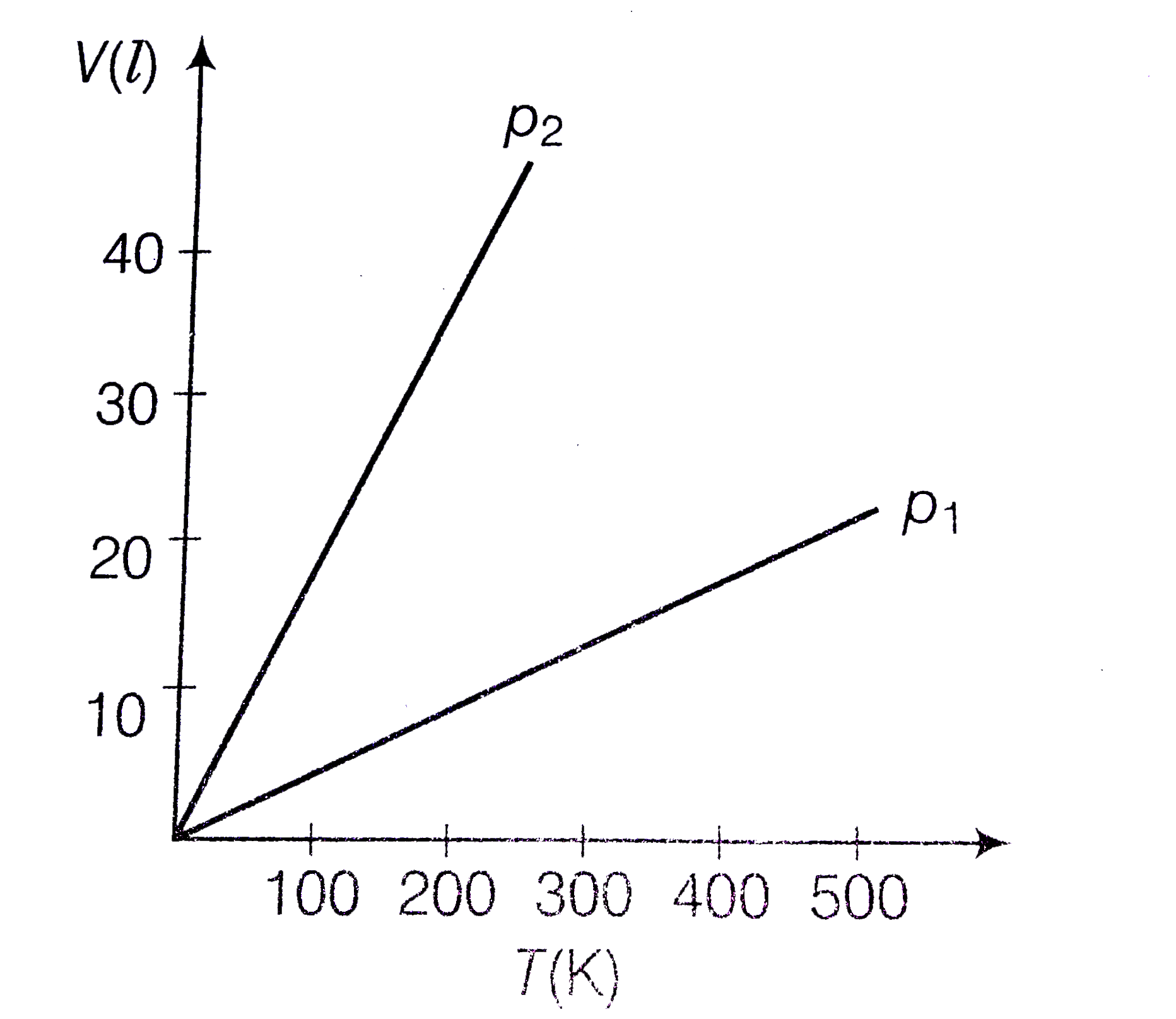
P1>P2
P1=P2
P1<P2
Data is insufficient
We Know for an ideal gas
pV=nRT⇒V=(nRp)T
Slope of the V - T graph m=dvdT=nRp [m=slopel of V−tgraph]
⇒ m∝1p [∴nR= constant]
⇒ p∝1m
hence (p1))P2=M2M1<1 (##ARHNCERTEXEPHYXIC12S01005_S01.png width=80%><br>WhereM_(1)isslopeofthegraphcorrespo∈d∈g→p_(1)andsimilarlym_(2)isslopecorrespo∈d∈g→p_(2)<br>rArr " " p_(2) lt p_(2) " or " p_(1) gt p_(2)
Topper's Solved these Questions
Similar Questions
Pressure versus temperature graphs of an ideal gas are as shown in figure. Choose the wrong statement
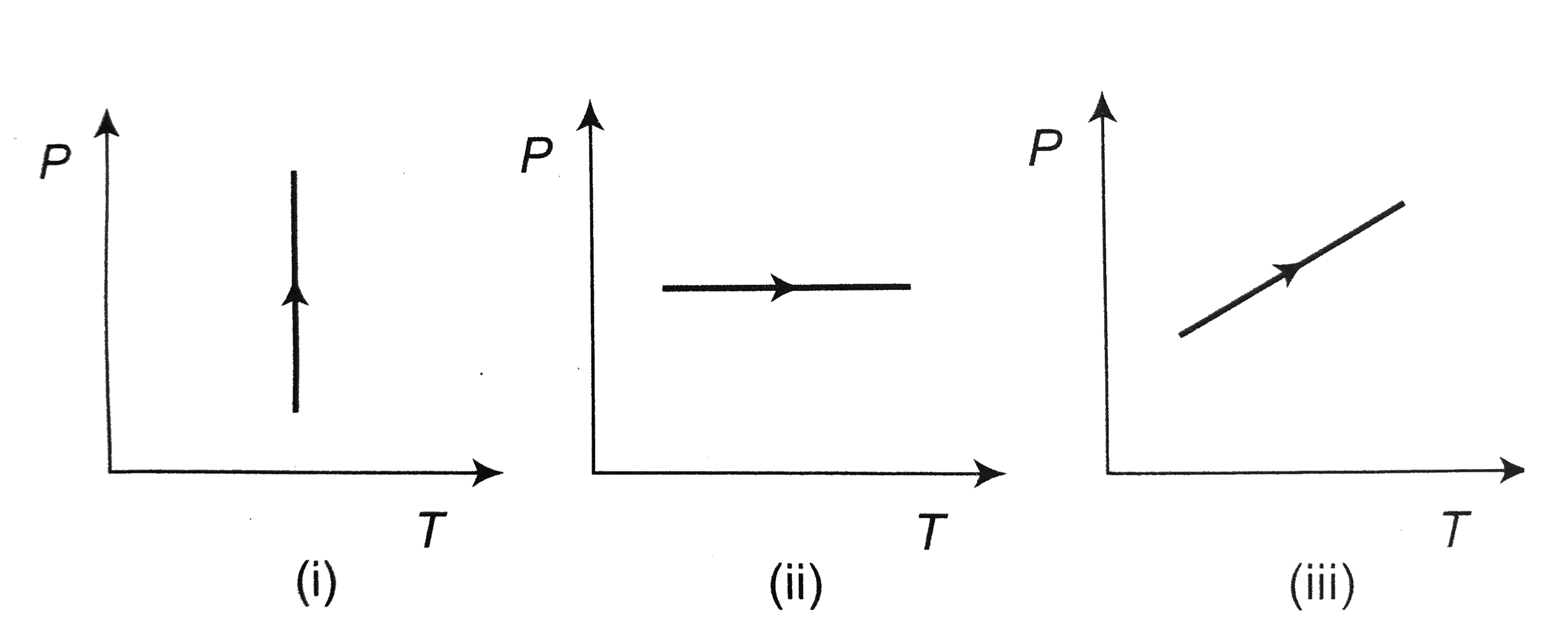 View Solution
View SolutionPressure versus temperature graphs of an ideal gas are as shown in figure. Choose the wrong statement
 View Solution
View SolutionPressure versus density graph of an ideal gas is shown in figure
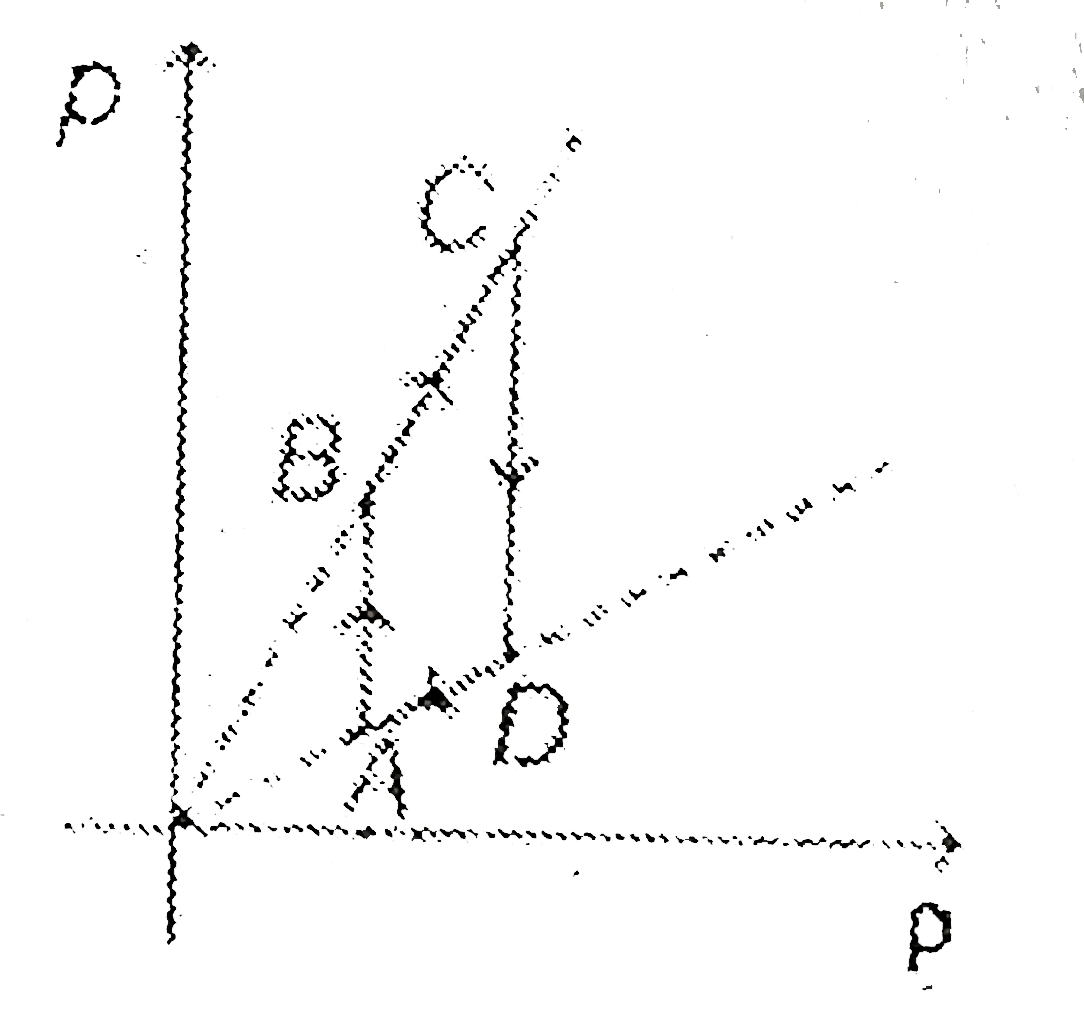 View Solution
View SolutionThe volume-temperature graphs of a given mass of an ideal gas at constant pressure are shown below. What is the correct order of pressure ?
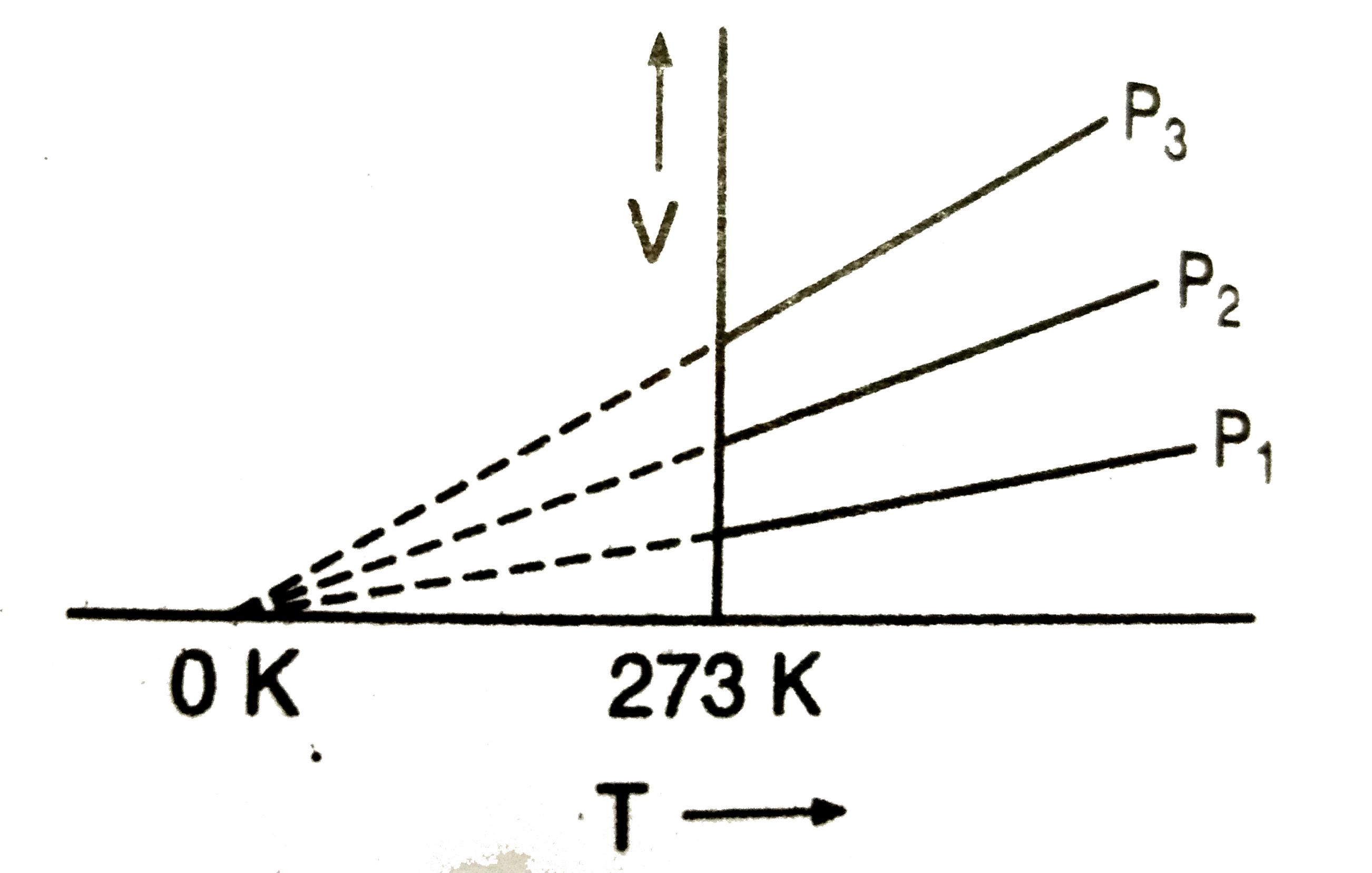 View Solution
View SolutionFigure shows volume - temperature (V-T) graph for same mass of an ideal gas at two different pressures P1and P2. Hence
View SolutionPressure versus temperature graph of an ideal gas is shown in figure. Density of the gas at point A is ρ0. Density at B will be
 View Solution
View SolutionThe graph of pressure and temperature for an ideal gas is as shown in figure. The given process is
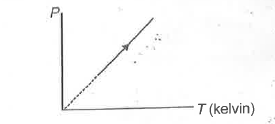 View Solution
View SolutionVolume versus temperature graph of two moles of helium gas is as shown in figure. The ratio of heat absorbed and the work done by the gas in process 1−2 is
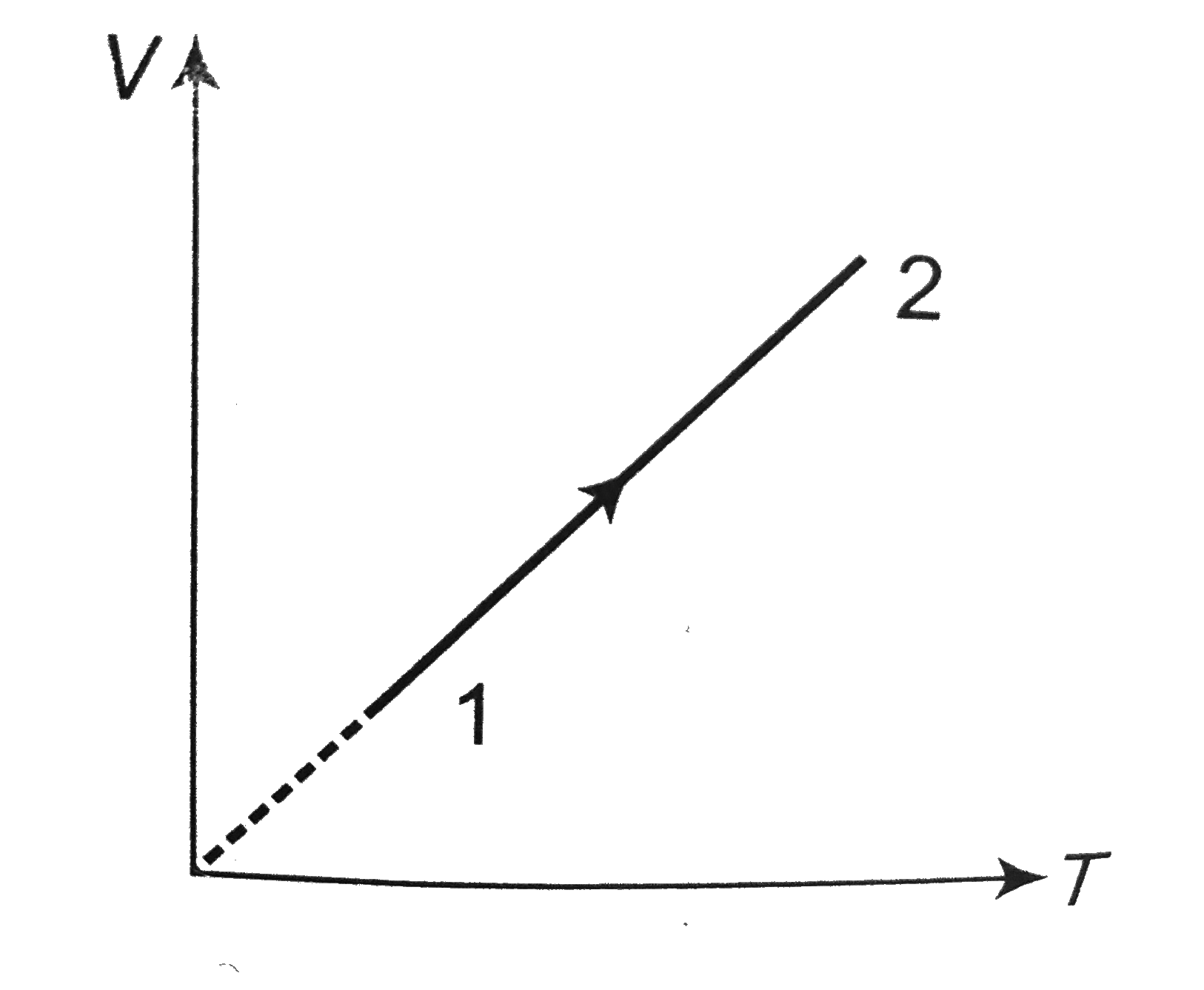 View Solution
View SolutionVolume versus temperature graph of two moles of helium gas is as shown in figure. The ratio of heat absorbed and the work done by the gas in process 1−2 is
 View Solution
View SolutionTemperature versus pressure graph of an ideal gas is shown in Fig. During the process AB
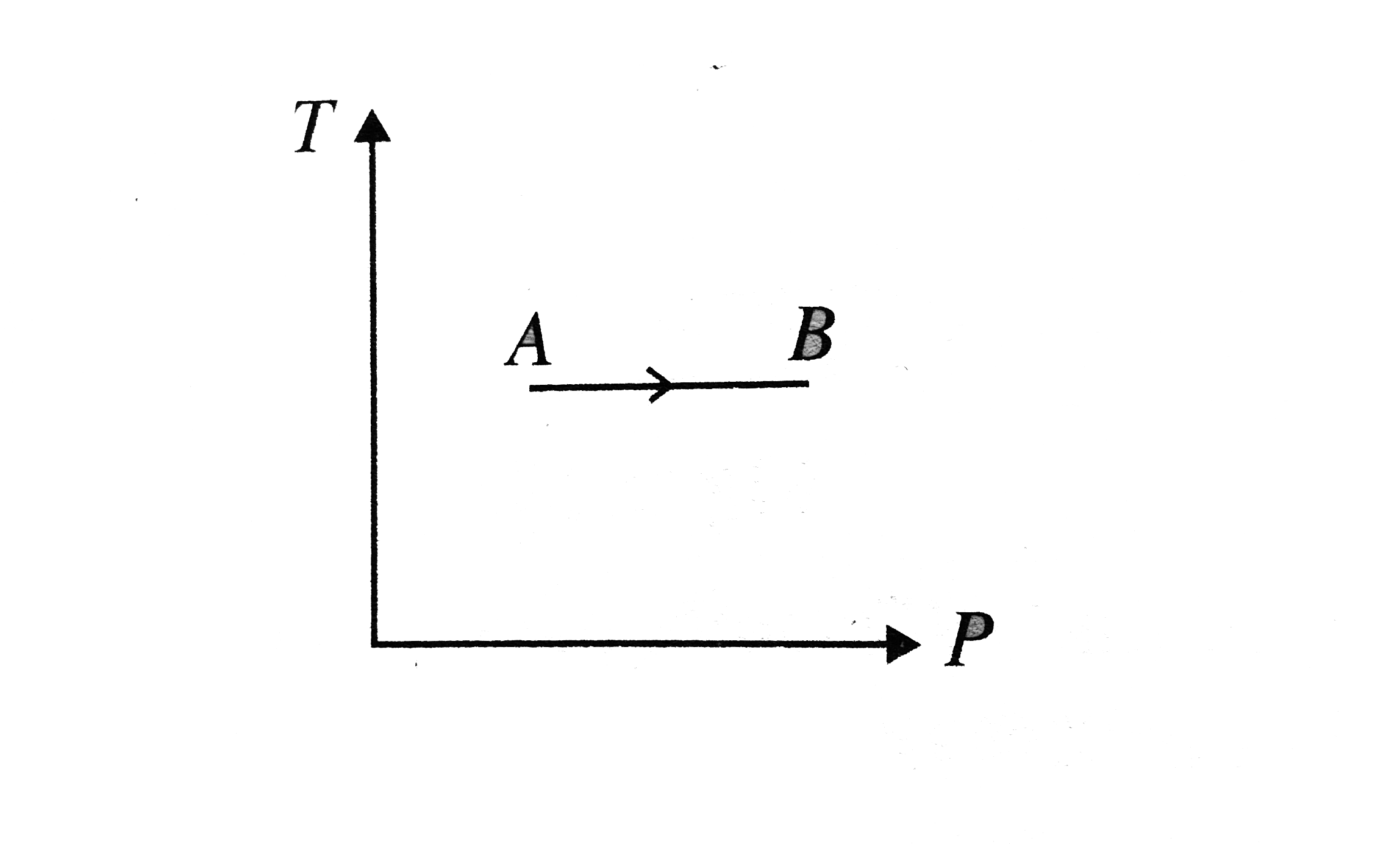 View Solution
View Solution

